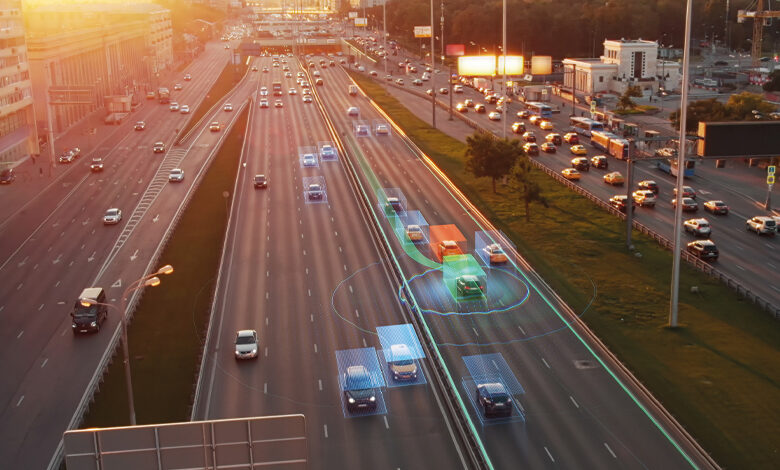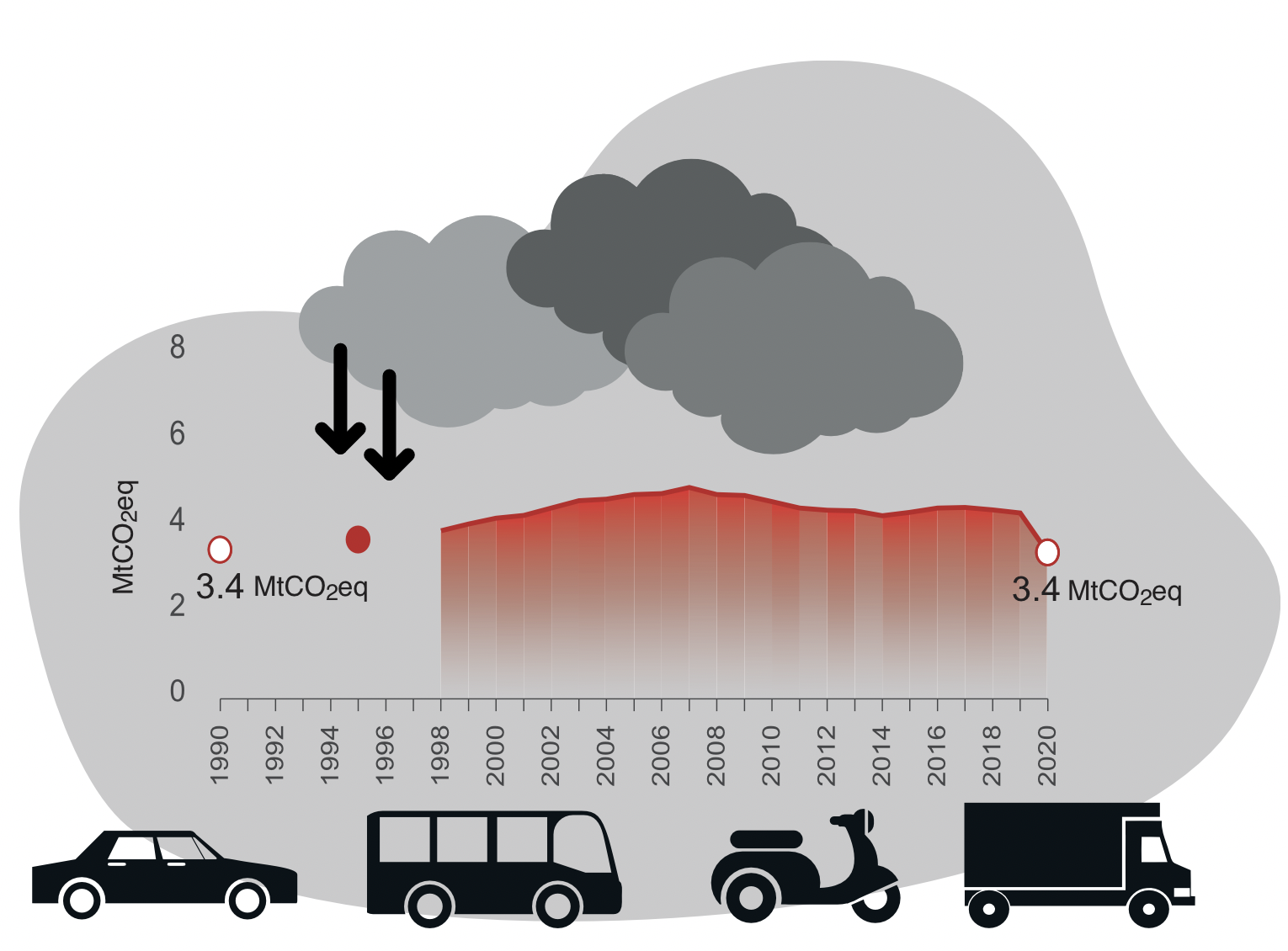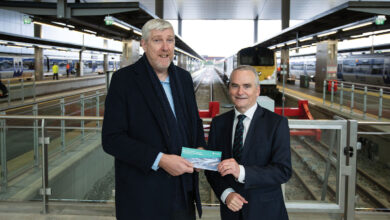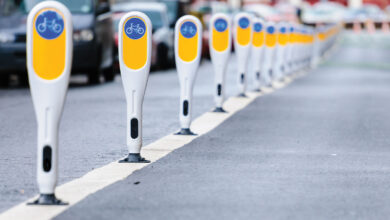Transport: A road to net zero

The current decarbonisation measures being taken in Northern Ireland will be necessary but not sufficient if Northern Ireland is to meet its emissions targets outlined in the Climate Change Act (Northern Ireland) 2022, a March 2022 Climate Change Committee (CCC) report has found.
The report furthermore states that emissions could be reduced by 83 per cent by 2032 if all of the current proposals, namely livestock reductions and increase in use of electric vehicles, are implemented over the next decade.
Under UK legislation, petrol and diesel combustion engine-based vehicles will be banned from sale throughout the UK by 2030, thus calling for a reform of the transport model which emphasises the importance of UK Government projects such as the proposed high-speed rail links between the north and south of England.
Northern Ireland’s rail network development has been stifled by the collapse of the Northern Ireland Executive, with the All-Island Rail Review – a collaborative project between the Republic’s Department for Transport and the Department for Infrastructure – unable to publish its recommendations for rail development throughout the island until there is an Executive formed in Northern Ireland.
The CCC report states: “By 2032, every new car and van sold in Northern Ireland should be zero-emission. This implies substantial investment to expand the electric vehicle charging infrastructure in Northern Ireland, and major scale up of plug-in vehicles’ share of new car sales from the current 10 per cent to 100 per cent within a decade. Enabling an increased proportion of journeys made by walking and cycling will be important to improve public health and air quality alongside reducing greenhouse gas emissions. Rail services should also be largely electrified, with the proportion of diesel freight trains in operation falling to below 15 per cent by 2050, from 87 per cent in 2020.”
EV incentive gap
Societal factors remain significant, with a report published by the Department for Infrastructure outlining that just over one-third (37 per cent) of the population would either ‘definitely’ or ‘strongly consider’ purchasing an electric vehicle, likely due to price factors with the majority of the people of Northern Ireland currently living between pay dates with no necessary savings to purchase electric vehicles.
Furthermore, electric vehicle charging infrastructure in Northern Ireland is only available every 30 miles, with the recently announced EV strategy only announcing an incremental increase in this target that electric vehicle infrastructure is available for residents every 25 miles, thus cutting off electric vehicles as a feasible means of transport for poorer residents in rural areas.
This concern around affordability is backed up by the availability of a relatively small grant (£3,000) for prospective purchasers, despite the average UK price of an electric vehicle amounting to more than £44,000, according to the Great Britain-based car service Book My Garage.
According to the Department for Infrastructure, there are, as of June 2022, 11,476 electric vehicles registered in Northern Ireland electric vehicles operational on the roads of Northern Ireland, a figure which is can be compared to the approximately 67,000 registered in the Republic of Ireland (October 2022).
Reducing transport emissions
Figures released by the Department of Agriculture, Environment and Rural Affairs show that transport emissions in Northern Ireland remain at broadly the same levels as they were in 1990, owing to an over-reliance on cars in Northern Ireland’s transport system.
In 2020, greenhouse gas emissions emanating from the transport sector amounted to 3.4 MtCO2eq; the same as they were in 1990. Whilst, at first glance, this appears promising, these figures come with the caveat of the one-off reduction in transport emissions which took place in 2020, meaning that emissions were almost certainly artificially deflated amid the Covid-19 pandemic.
Statistics released by the Department of Agriculture, Environment and Rural Affairs in 2022 show that greenhouse gas emissions in Northern Ireland have reduced significantly less than compared to England, Scotland, and Wales over the past two decades. Between 1990 and 2020, Northern Ireland greenhouse gas emissions fell by 23.9 per cent, whilst the overall reductions throughout the UK was 49.9 per cent.
In 2020, the transport accounted for 84.9 per cent of the greenhouse gas emissions which took place between 2019 and 2020. With workers increasingly commuting to offices again, and aviation levels rising following the shock to that sector during the pandemic, the Northern Ireland Executive, in a report released in February 2023, has projected that emissions in Northern Ireland will have increased in 2021 and 2022. A subsequent reduction to 3.1 MtCO2eq by is projected 2030, once the full effects of the upcoming transformation to electric vehicle infrastructure and renewable fuels are being felt.
However, even if the projection of 3.1 MtCO2eq by 2030 comes to fruition, this will still only mark a 0.3 MtCO2eq reduction in emissions from the transport sector from the base year of 2020, meaning that the transport sector in Northern Ireland cannot solely deliver the transition to net zero.
There is currently no plan in Northern Ireland which will transform the fundamentals of the transport sector, meaning that the population, under the current plans, will remain reliant on private vehicles as their primary form of transport, in the absence of any significant expansion of public transport.
John O’Dowd MLA, prior to his enforced resignation as part of the collapse of the Northern Ireland Executive, intimated that he wished to see a new railway connection to Belfast International Airport, but has remained hesitant to comment on rail connectivity as a solution for rural regions in Fermanagh, Tyrone, Derry, south Down, and south Armagh, meaning that residents of these areas are likely to remain reliant on private vehicle transport.
In the Republic, Minister for Transport Eamon Ryan TD has outlined his vision for a transformation of the transport sector which expands the availability of public transport, as well as being a proponent of the 15-minute city urban planning concept which would reduce the need for lengthy journeys and use of private vehicles, both would result in a significant reduction of greenhouse gas emissions. However, despite these measures, it is worth noting that the Republic’s Climate Change Advisory Council has found that the Irish Government may not reach 40 per cent of the emissions targets it has set itself.
Greenhouse gas emissions from transport sector in Northern Ireland 1990-2020

Methane currently accounts for 22.3 per cent of the overall emissions of greenhouse gases in Northern Ireland, whilst in the UK overall, methane accounts for 9.3 per cent of emissions. Therefore, the importance of the transport sector reducing its greenhouse gas emissions is paramount, given that the Climate Change Act, passed in the Assembly in 2022, contains the ‘Poots compromise’ that the agricultural sector – the largest emitting sector in Northern Ireland – does not have to achieve net zero methane emissions, instead only having to reduce methane emissions by 46 per cent before 2050.
This was a clause inserted into the Climate Change Bill as a compromise between then-Minister for Agriculture, Environment and Rural Affairs, Edwin Poots MLA, and then-Green Party leader Clare Bailey, who proposed a net zero emissions target for methane by 2050 in line with the rest of the UK.
The agriculture sector, according to the statistical analysis published by the Department of Agriculture, Environment and Rural Affairs in late 2022, is the largest-emitting sector in Northern Ireland, followed closely by transport.





